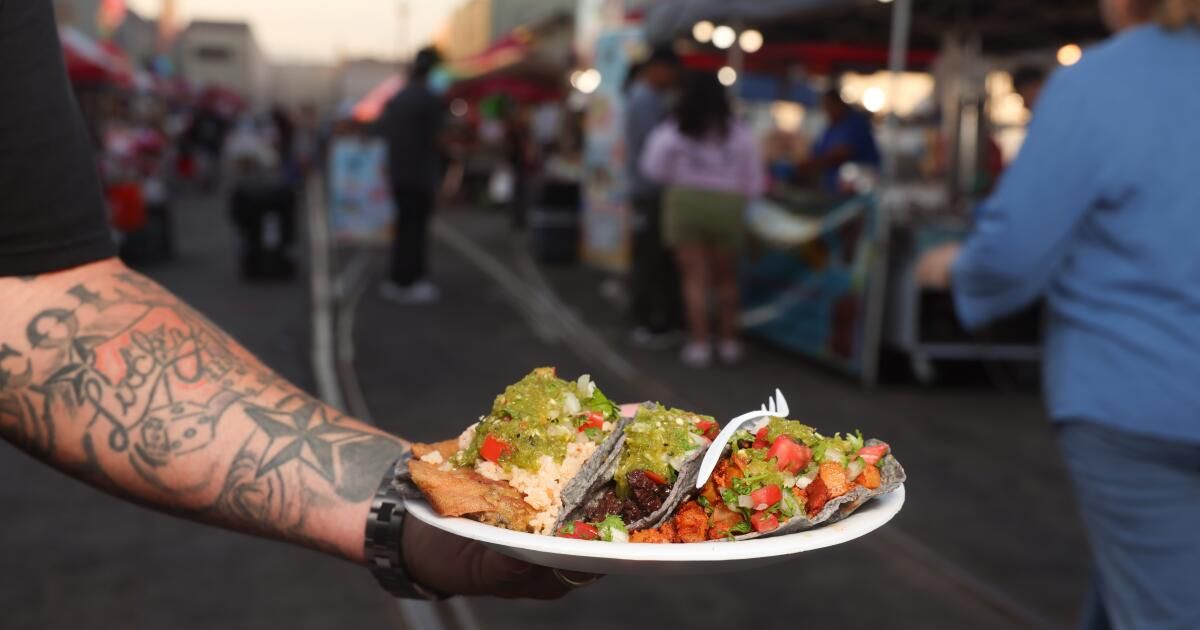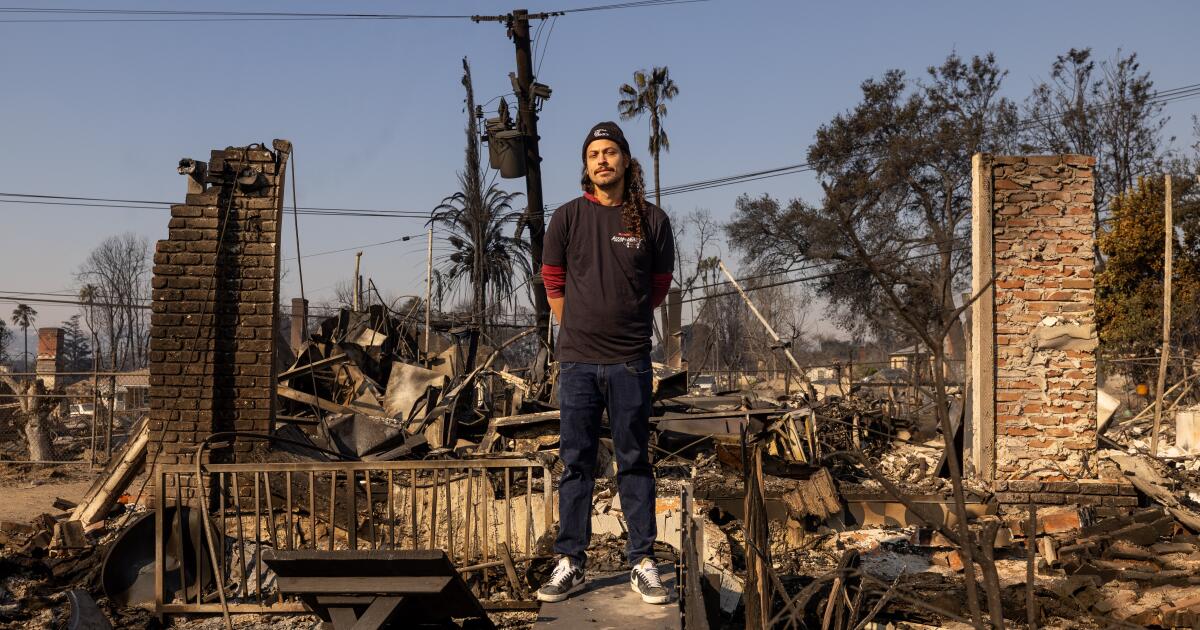They are everywhere.
Tortillas with fillings and garnishes, three or four to a paper plate, devoured in thousands of taco stands or tarp-covered stands that scatter across the landscape like cells in blood. On any given day, thousands of tacos—tens of thousands?—are picked up and eaten, from hand to hungry mouth, in our metropolis of Greater Los Angeles. 18 million.

Get to know Los Angeles through the tacos that bring it to life. From restaurants to trucks, carts and more, here are 101 of the best in town.
Other cities have taco addictions, but in Los Angeles—which has far more Mexican restaurants than any other county in the U.S.—taco culture is constantly booming. At the Cha Cha Cha rooftop bar in the Arts District, you can get a soft-shell crab taco for $26 and at Nobu Los Angeles, a caviar taco for $24, but also paper-plate tacos for $2 right outside your favorite neighborhood gay bar, and everything in between. The city has given birth to Korean tacos, black tacos, vegan tacos, halal tacos, kosher tacos, along with an explosion of regional tacos from the far corners of Mexico, making Los Angeles the most taco-diverse city in the world.
In Los Angeles, the taco is our avatar. about usHow did we get here?
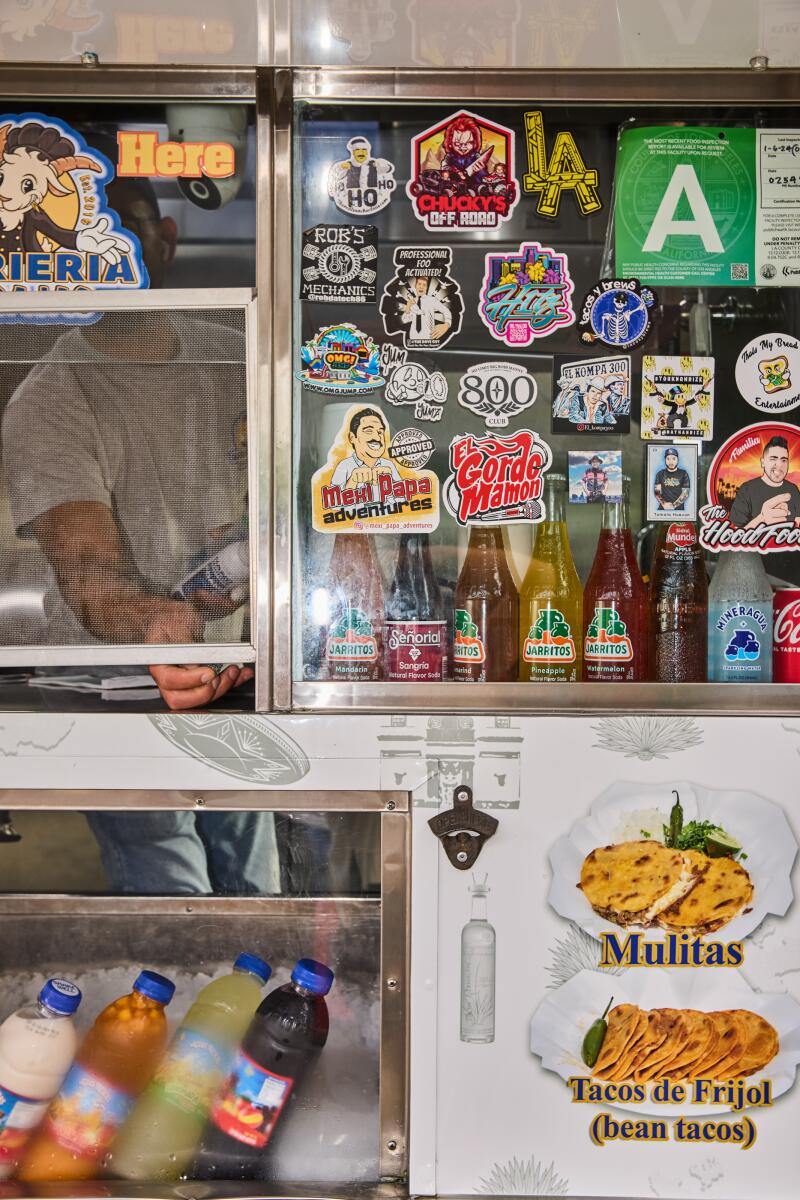
Barajas Birrieria.
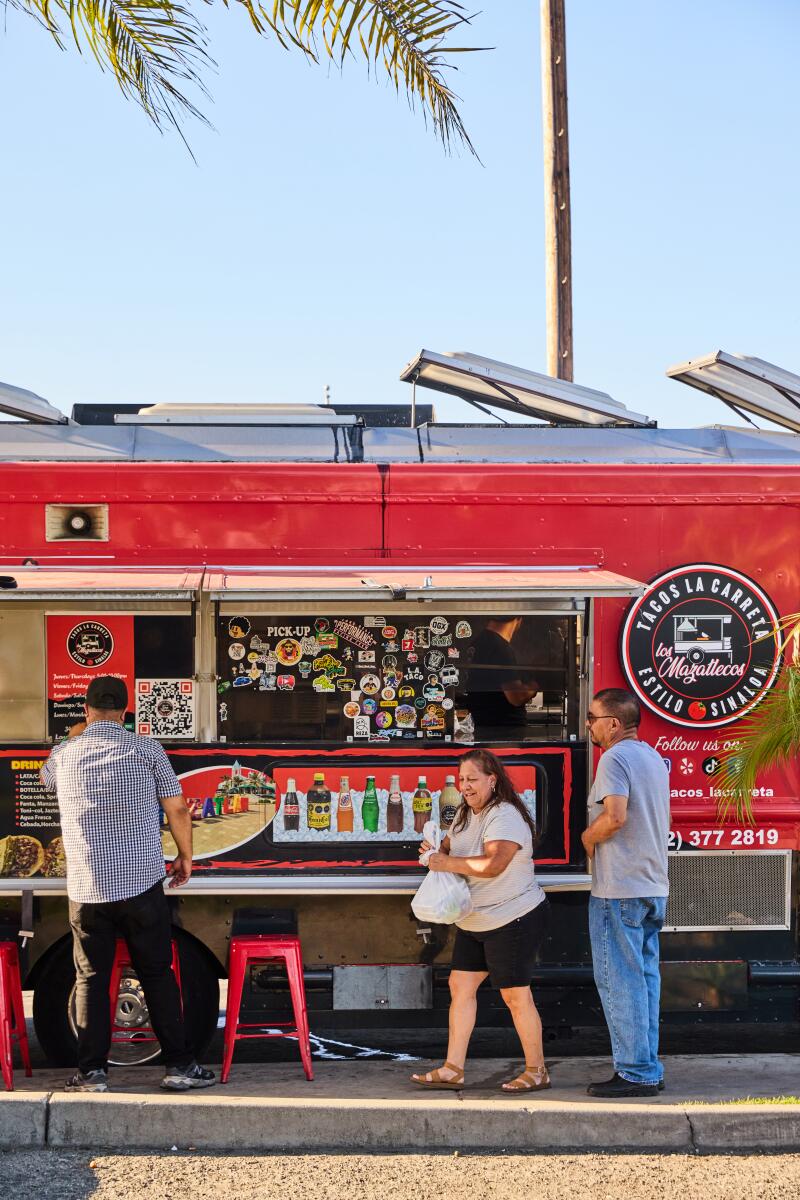
Tacos La Carreta. (Andrea D'Agosto / For The Times)
The rise of the taco king
Arguably, the modern period of taco obsession in Los Angeles begins in earnest with the arrival of the taco truck in Los Angeles in 1974.
Of course, there was a long history of taco eating in Los Angeles before this point. Tacos have been eaten since indigenous Mexicans domesticated corn, but they didn’t become mainstream until after World War II. In 1962, Glen W. Bell Jr. founded Taco Bell (the first U.S. taco chain to go national) in Downey, after copying the hard tortilla taco he loved from Lucia Rodriguez of Café Mitla in San Bernardino.
Then, an immigrant from Los Angeles decided to enter the chat. In my opinion, Raul Martinez Sr. is the Californian who made history and whose invention of the taco stand was the first step in the city's quest to reach taco nirvana.
Less than a year after the night he parked a converted ice cream truck next to an East Los Angeles bar and sold $70 worth of tacos, Martinez and his family opened King Taco No. 1 in a modern building in Cypress Park. More locations quickly spread across Southern California. The late critic and foremost taco chronicler of his era, Jonathan Gold, He told John Rabe of the local radio show “Off-Ramp” That the Taco King permanently changed the city's sensibility towards tacos.
“Suddenly, almost at the same time, everyone in town realized that a taco was not this kind of crunchy, pre-fried thing with orange cheese and lettuce that they had eaten as a kid,” Gold said during a visit to King Taco with Rabe in 2013, shortly after Martinez’s death. “But it was something else that was made with a fresh tortilla, that was soft, that had been rolled and stuffed with spicy beef, cilantro and onions.” In fact, Martinez is credited with bringing back from Mexico the smaller, “two-bite” corn tortilla, now ubiquitous in taco shops across the United States.
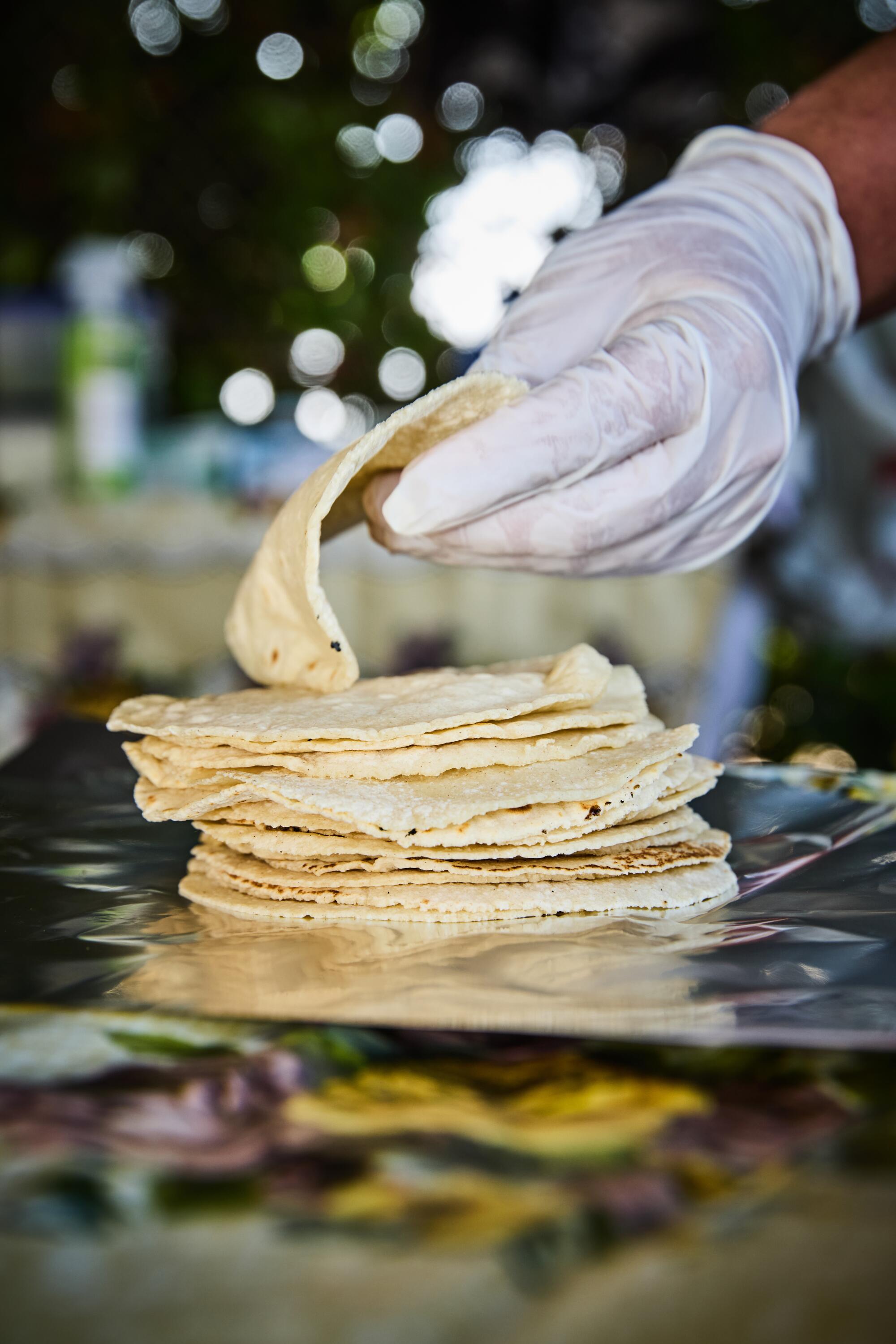
Soft tortillas are stacked just like they are at Barbacoa Ramirez in Arleta.
(Andrea D'Agosto / For The Times)
King Taco, along with El Taurino in Pico-Union (founded by Martinez's younger brother, Adolfo Martinez) and Yuca's in Los Feliz by Socorro Herrera, were places founded by Mexicans who moved here after the 1950s. Collectively, they and many others in the region led Los Angeles on a quest for ever more satisfying and refined tacos.
The taco shops of this wave were beacons for Mexican-Americans growing up in the 1970s and 1980s. Natalia Molina, author of “A Place at the Nayarit,” about her family’s Echo Park restaurant, recalls the lengths she drove as a teenager to get a good taco.
“I was in high school in Hollywood, and if we had a free moment, we would drive from Hollywood to Lincoln Heights to eat at King Taco,” he says. “There wasn’t that much variety between the two places if you wanted those kinds of tacos.”
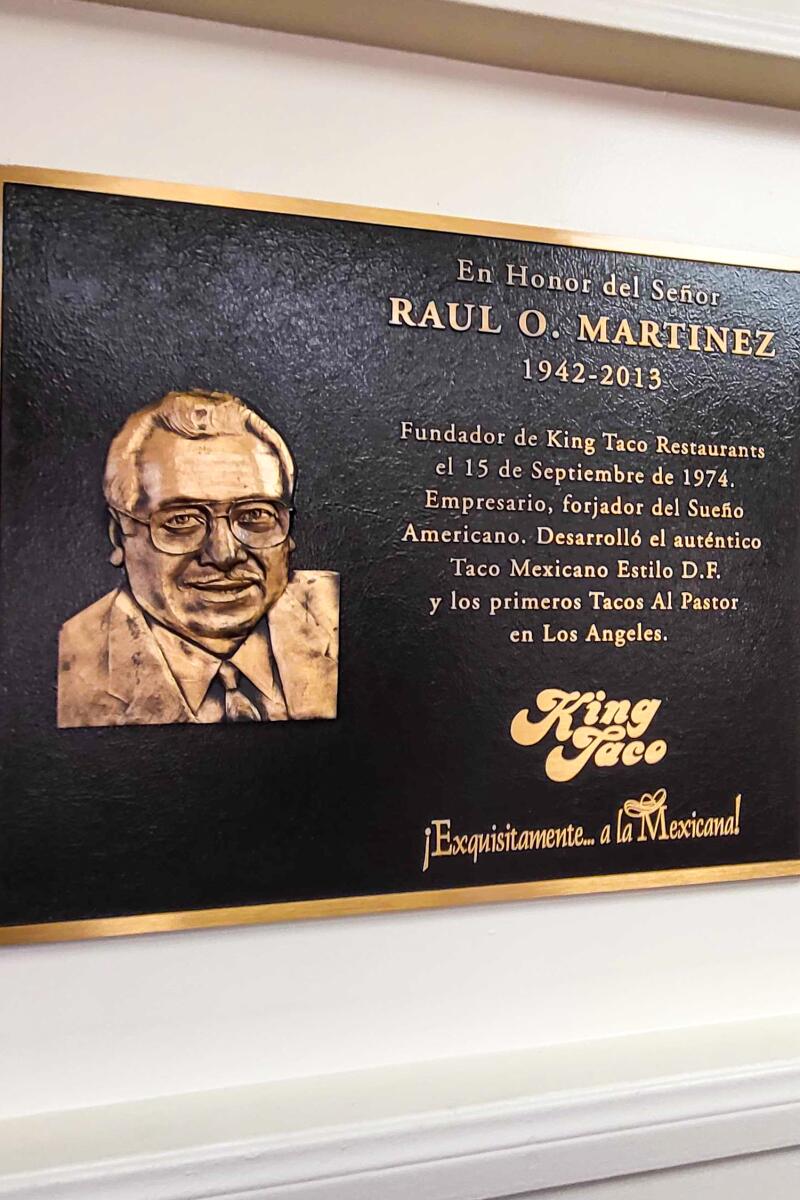
A plaque at King Taco commemorates Raul Martinez, Sr., inventor of the taco truck and founder of King Taco No. 1 in Cypress Park.
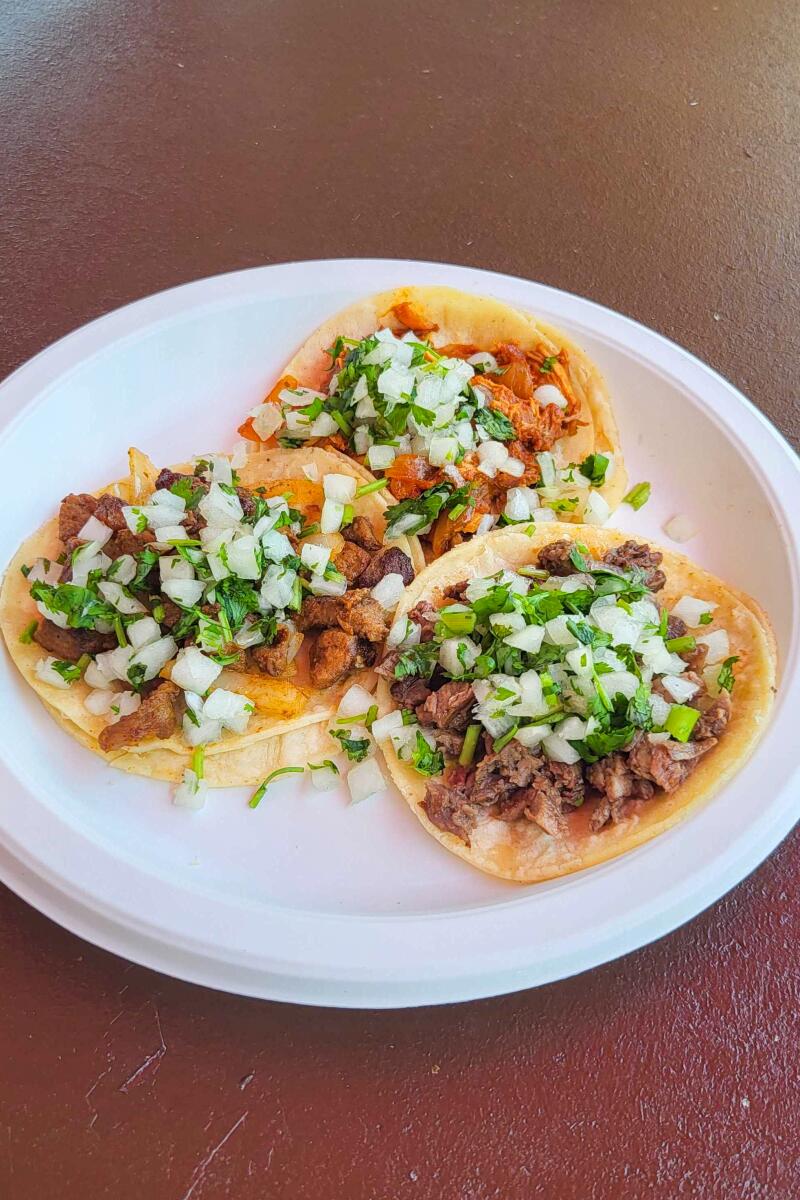
A plate of tacos at King Taco. (Daniel Hernandez / Los Angeles Times)
The theme of taco hunting is still present in the culture. Many will drive in search of that “taco” they had another night, or that trip to the family ranch. Or that trip to Puerto Vallarta. Someone may fall in love on a first date at a taco stand.
The experience of eating tacos can help us manifest earlier moments or intertwined episodes in our lives.
“It’s not just what I long for, but what I feel nostalgic about,” Molina says. “It could be a type of seafood because I miss Nayarit, or rather Alta California, because maybe I miss not only Tijuana but also San Diego.”
Today, King Taco No. 1 is a time capsule in the best sense of the word, with taqueras and taqueros in paper hats behind a window and orange swivel chairs bolted to tables. A plaque on the wall features Martinez in relief and calls him “creator of the American dream.”
One sunny afternoon, workers in long sleeves and boots and older ladies from the neighborhood came in to pick up their orders. I wanted to try what some might call the typical Los Angeles taco: the carne asada taco, plus one al pastor and a tinga (with fresh melon water).
The King Taco carne asada taco, 50 years later, is still satisfying. Seasoned carne asada and a sprinkle of chopped cilantro and onions on two small, stacked tortillas. Al pastor and tinga also did their job. Add red or green salsa if you like. That's it. All for just $10.97. They are, as Gold said that day, “very good, solid tacos with a B+ rating.”
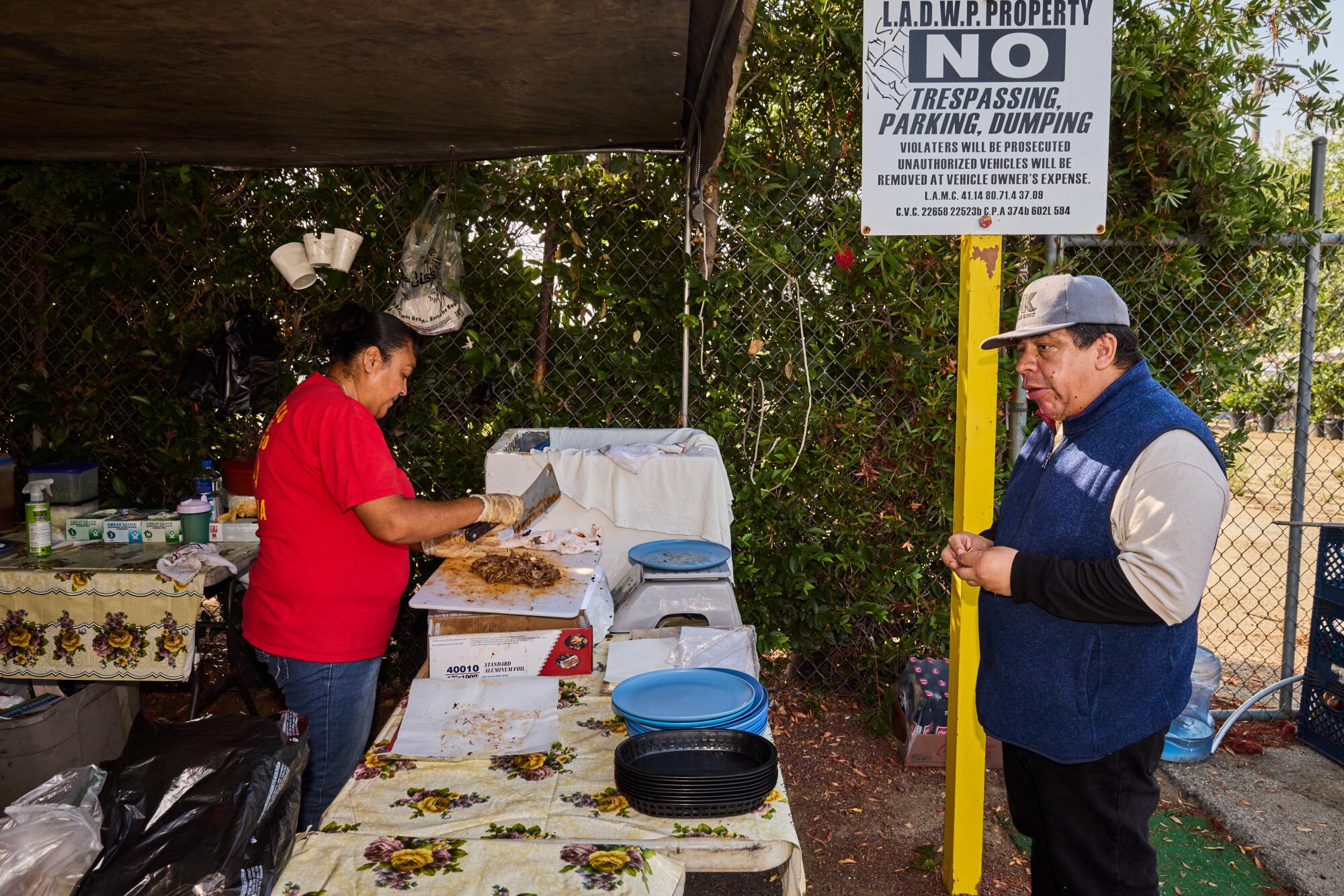
Barbacoa Ramirez is part of a wave of taco stands that stand out in ways specific to certain regions or towns. Street vendors currently operate in a legal gray area between state and local laws.
(Andrea D'Agosto / For The Times)
The taco maker from Alta California
If you have that hunch that LA tacos taste better on the street, you're not alone. I believe this too, but I haven't found anyone who can explain the science behind it.
After the 1990s, NAFTA and globalization, another wave of immigrants from Mexico brought with them culinary traditions from states like Oaxaca, Guerrero and Veracruz. Many of the newer immigrants began cooking on the street, attracting people with newer, more specific forms of tacos.
The next innovation came with taqueros born or raised in California, many of them Mexican-American chefs trained in high-end kitchens: Think of Carlos Salgado of the Orange County fine-dining restaurant Taco Maria, which evolved from a taco truck, or Wes Avila of Guerrilla Tacos, which began as a stand, then a truck, then a restaurant in the Arts District. These chefs combined their family traditions and regional lines with the bounty of California- or Baja-style ingredients. (An even earlier beacon of modern Mexican cuisine in Los Angeles was Mary Sue Milliken and Susan Feniger’s original Border Grill, which opened on Melrose in 1985.)
These initiatives laid the groundwork for the emergence of what would become known as Alta California cuisine. Quality corn tortillas became a central focus of this movement.
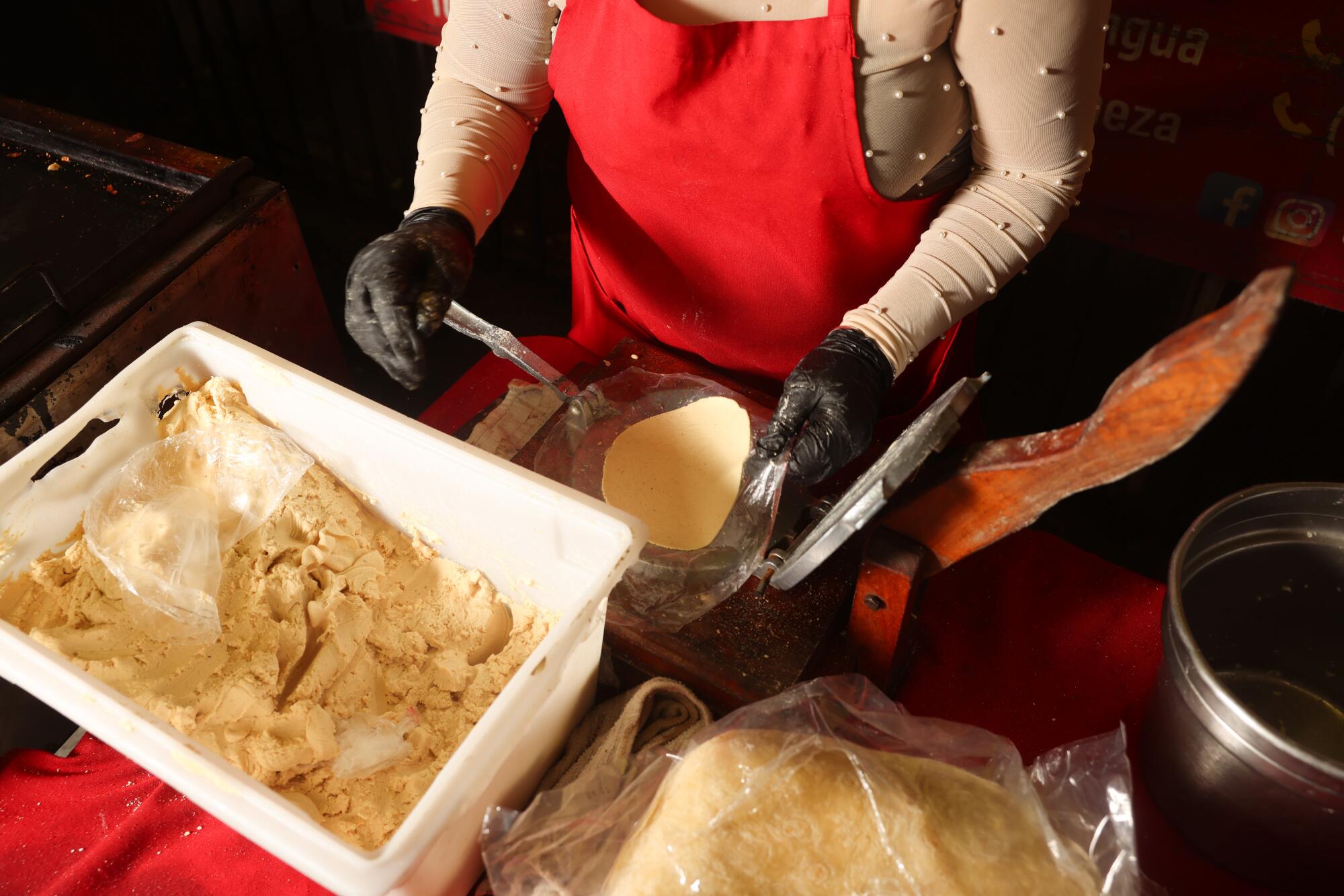
Tortillas are made fresh at Tijuana-style street taco stand Los 2 Poblanos in Compton.
(Dania Maxwell/Los Angeles Times)
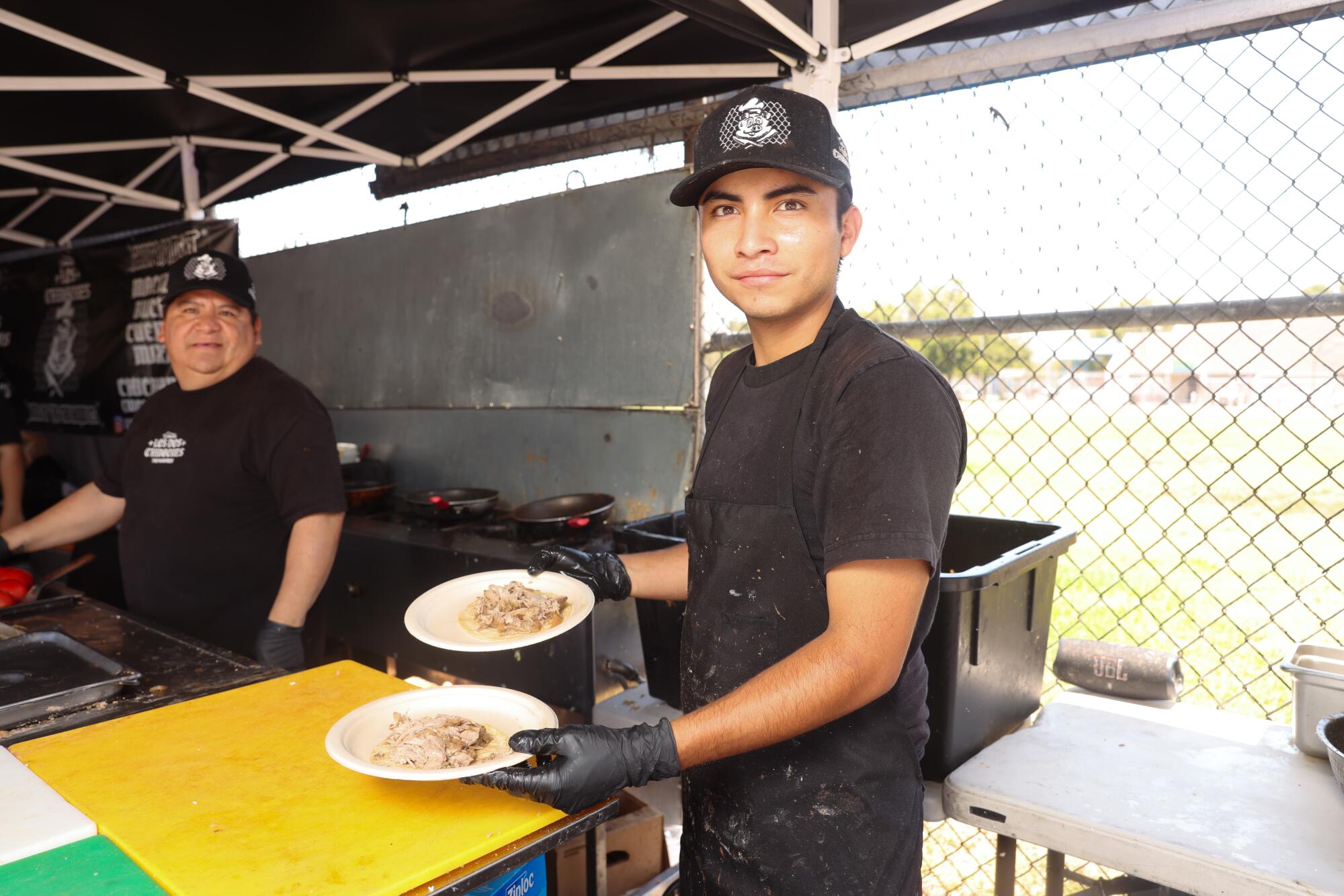
Gael Gaona holds plates of tacos at Carnitas Los Chingones in Boyle Heights.
(Dania Maxwell/Los Angeles Times)
Recently, a veritable fourth wave has built up on all of this. Regional taco masters are tapping into updated taco styles from Tijuana, Mexico City, and Guadalajara. Sometimes, an exceptional new taquero lands in the Los Angeles taco market and quickly grabs attention. Think Teddy's Red Tacos in 2017 or Tacos Los Cholos in 2019.
The variety is dizzying.
The rise of Alta California tacos and regional migrant specialists have combined in a way that marks a pivotal moment for taco lovers, especially those who are Mexican, Chicano, Pocho, or mestizo-Latino.
“They’re using the taco as an affirmation of their identity,” says Times columnist Gustavo Arellano, author of “Taco USA.” “They know that Americans, the world, really can’t get enough of tacos, [even as] We are often reduced to just our kitchen.
“Our food and the people who prepare it, who make our tacos, need to assert themselves at a time when Mexicans are being demonized right now,” says Arellano, “and at a time when Mexican food is more popular than ever.”
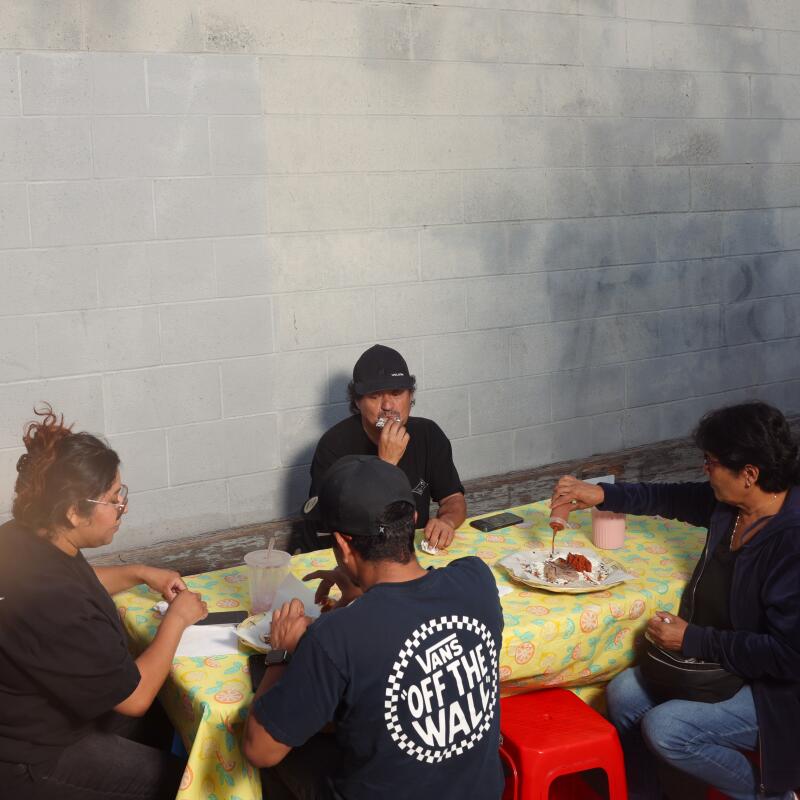
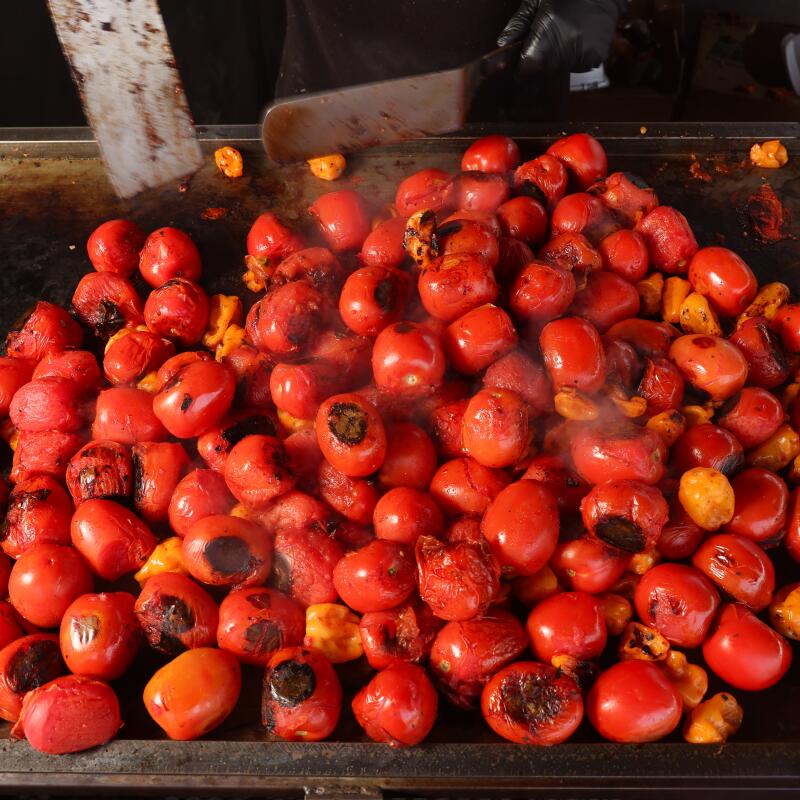
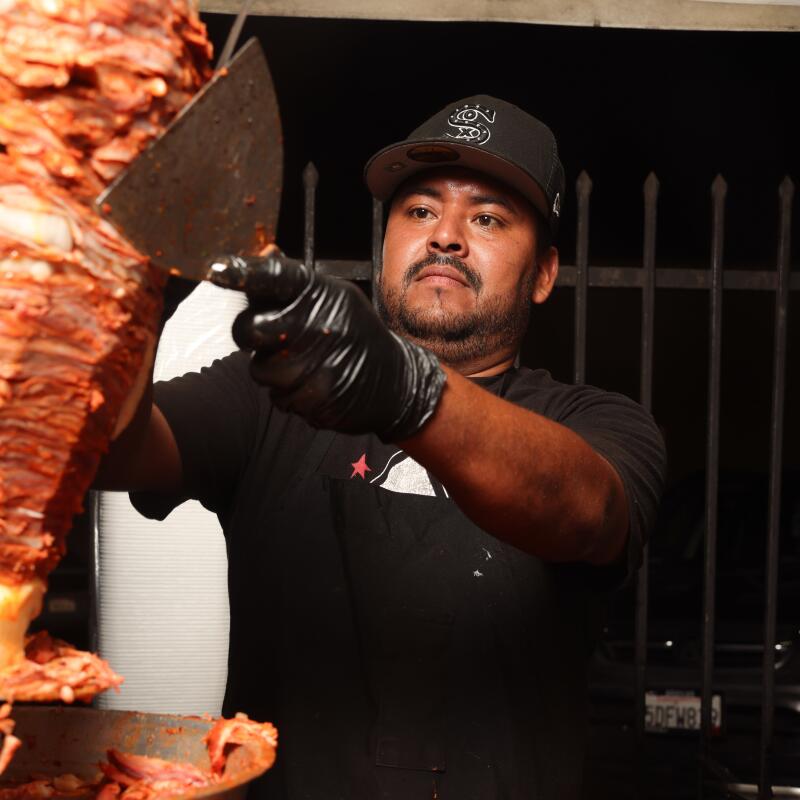
Diners at Cocina Mi Tierra, serving traditional Oaxacan food. Seared tomatoes for salsa at Carnitas Los Chingones. A taquero cuts carne al pastor at Tacos Los 2 Poblanos. (Dania Maxwell / Los Angeles Times)
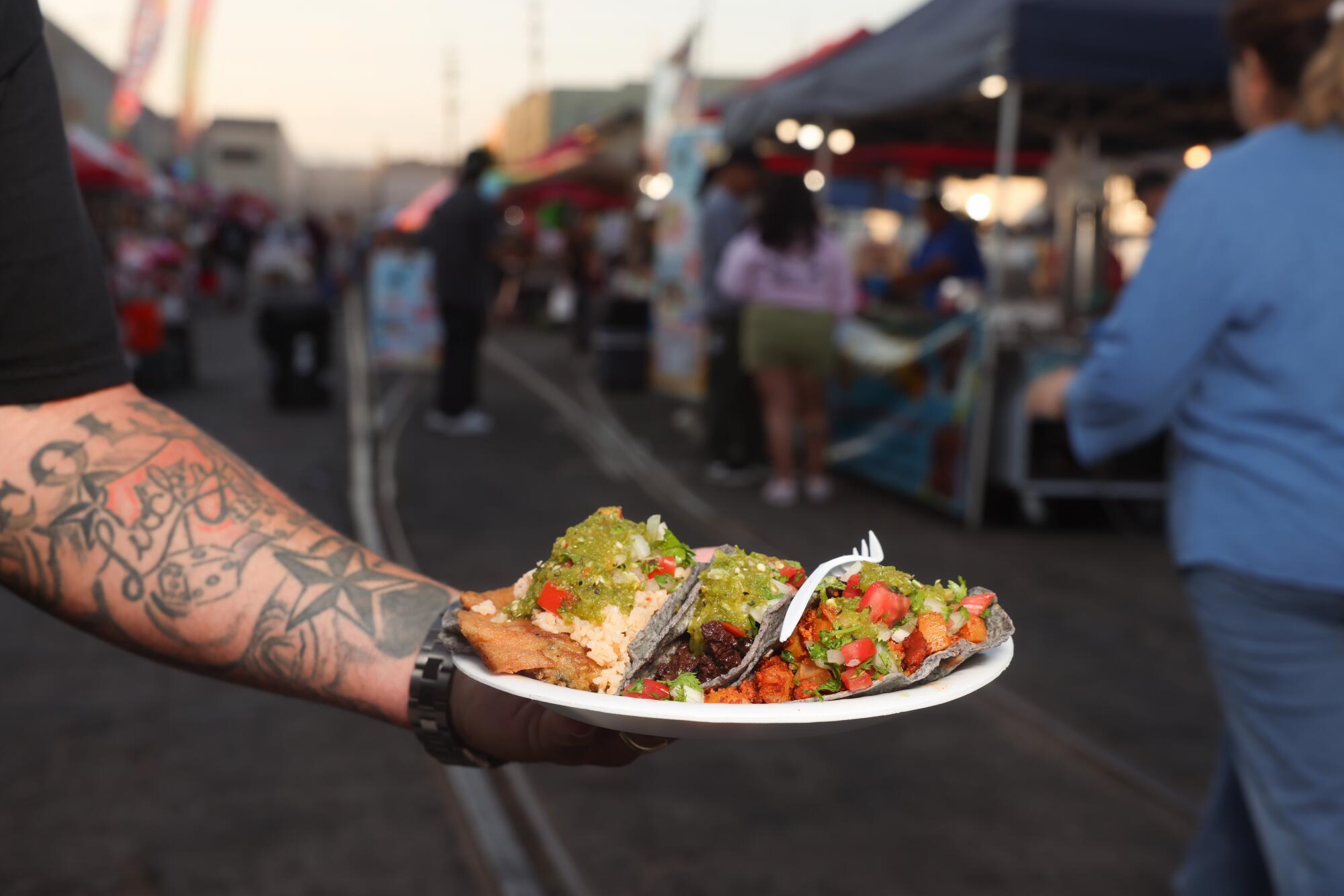
Los Angeles taco culture is in a state of chaotic abundance, you might say.
(Dania Maxwell / Los Angeles Times)
Broader challenges
So where are we right now? In chaotic abundance, you might say. Tacos in L.A. are key to the whole strata of daily life, with all its sociocultural and historical layers, contradictions and idiosyncrasies.
“There’s just the explosion of al pastor places everywhere,” says USC professor Sarah Portnoy, creator and producer of the documentary “Abuelita’s Kitchen: Mexican Food Stories.” “Especially since the pandemic.”
Two factors converged here.
First, the anti-immigrant policies of the Trump administration after 2016 forced many local governments, including Los Angeles, to liberalize street vending rules, an effort to protect undocumented residents from threatened deportation sweeps. Then the pandemic hit. Its closures and layoffs in the service sector forced many workers to seek a living selling food on the street and food made in home kitchens via social media.
There is no known figure for how many street taqueros work in the region today. The last estimate of street vendors in L.A. County was made pre-pandemic and held at 50,000, about 10,000 of which were estimated to be food vendors, according to Doug Smith of the nonprofit Inclusive Action for the City. The actual current figure is likely higher.
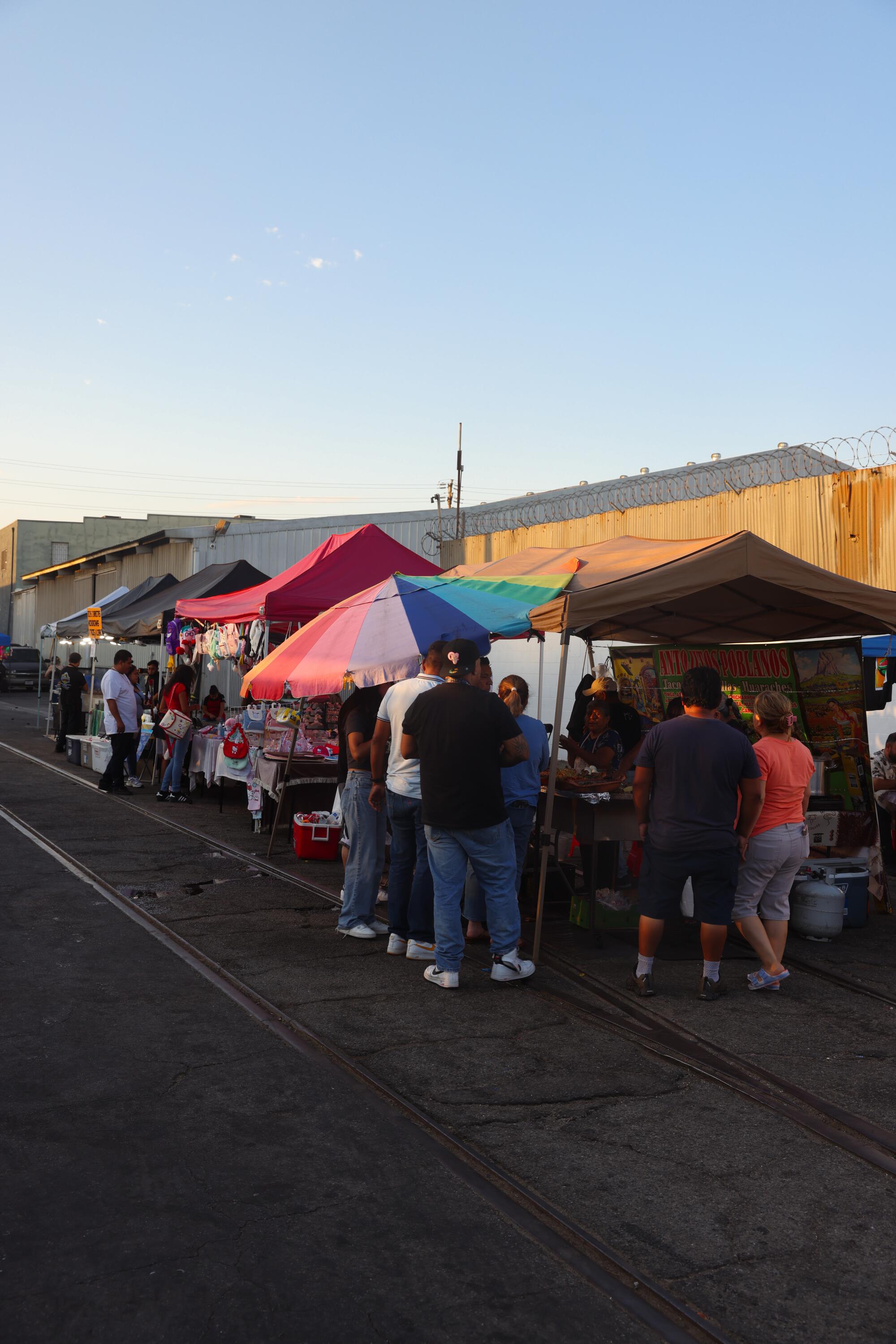
Unofficial night markets, like this off-shoot of the Avenue 26 Night Market in an industrial section of downtown, proliferated during the pandemic.
(Dania Maxwell / Los Angeles Times)
In 2023, street vending became legal in California. But as local jurisdictions were left to make their own rules interpreting the state law, taqueros and all street food vendors have been left in a precarious legal gray zone. The permitting process in Los Angeles County has so far proved too costly and archaic to work for most, several taqueros told me.
“It’s rooted in a history of animus toward street vending and efforts to exclude street vendors,” says Smith. “There’s also a history of racist exclusion of street vendors and their communities, and that’s deep-seated.”
In recent years, taco vendors have more frequently appeared in news stories documenting incidents of violence, intimidation, theft, harassment and even fatal attacks, frequently with a racial tinge. In addition, competition between taqueros on public streets sometimes escalates to confrontations.
But these stories, though distressing, do not reflect the greater L.A. vibe when it comes to street tacos.
“Just in my neighborhood there’s like, I don’t know, five, six big al pastor places with the lights every night, all the time, and lines,” Portnoy says of changes she’s witnessed since the pandemic and the legalization of street vendors. “People who probably would have been much more hesitant to eat street tacos before, it’s part of their culinary landscape.”
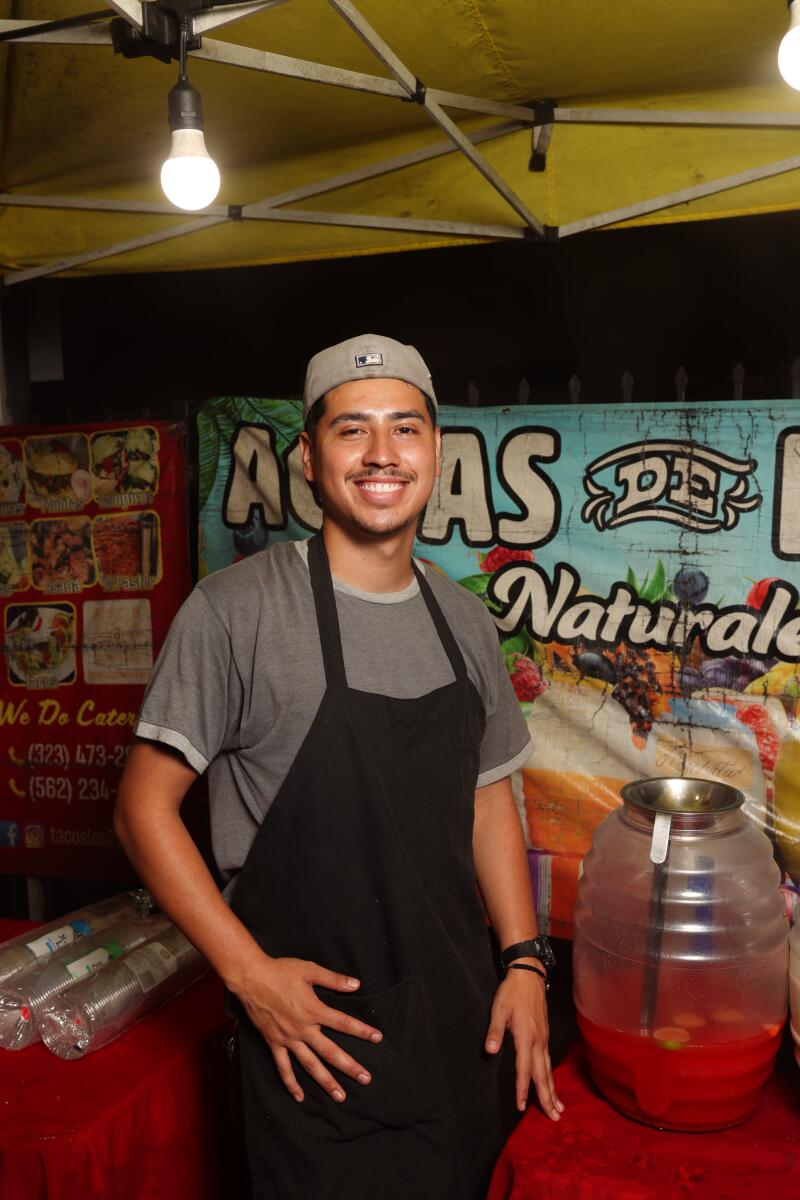
Jose Robles, 23, has been working at Los 2 Poblanos since he was 18.
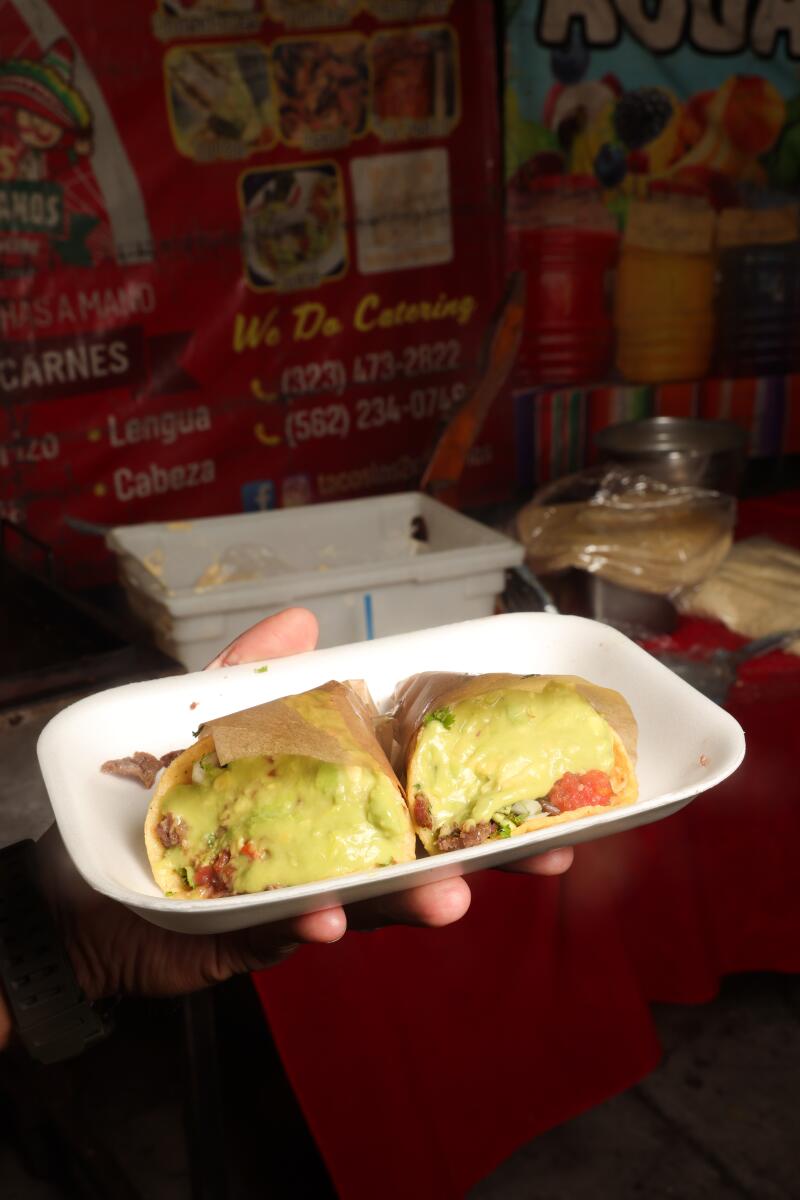
A heavy dollop of guacamole is key at this Tijuana-style spot. (Dania Maxwell / Los Angeles Times)
How taqueros are born
It is a cool Sunday evening in July and Jose Robles is at the grill making tacos on a Compton sidewalk for the stand Tacos Los 2 Poblanos. He’s 23, a second-generation Angeleno, and has been a taquero for five years — since he was 18.
Meeting him on this night, I am struck that he is one of hundreds of taqueros working in the city at this exact same moment. Each, I think, had to start somewhere.
“I dropped out of college because of some problems at home, and I needed to pay bills,” he says. “It was just me and my mom. A friend hooked me up with this job right here. This is my first job ever.”
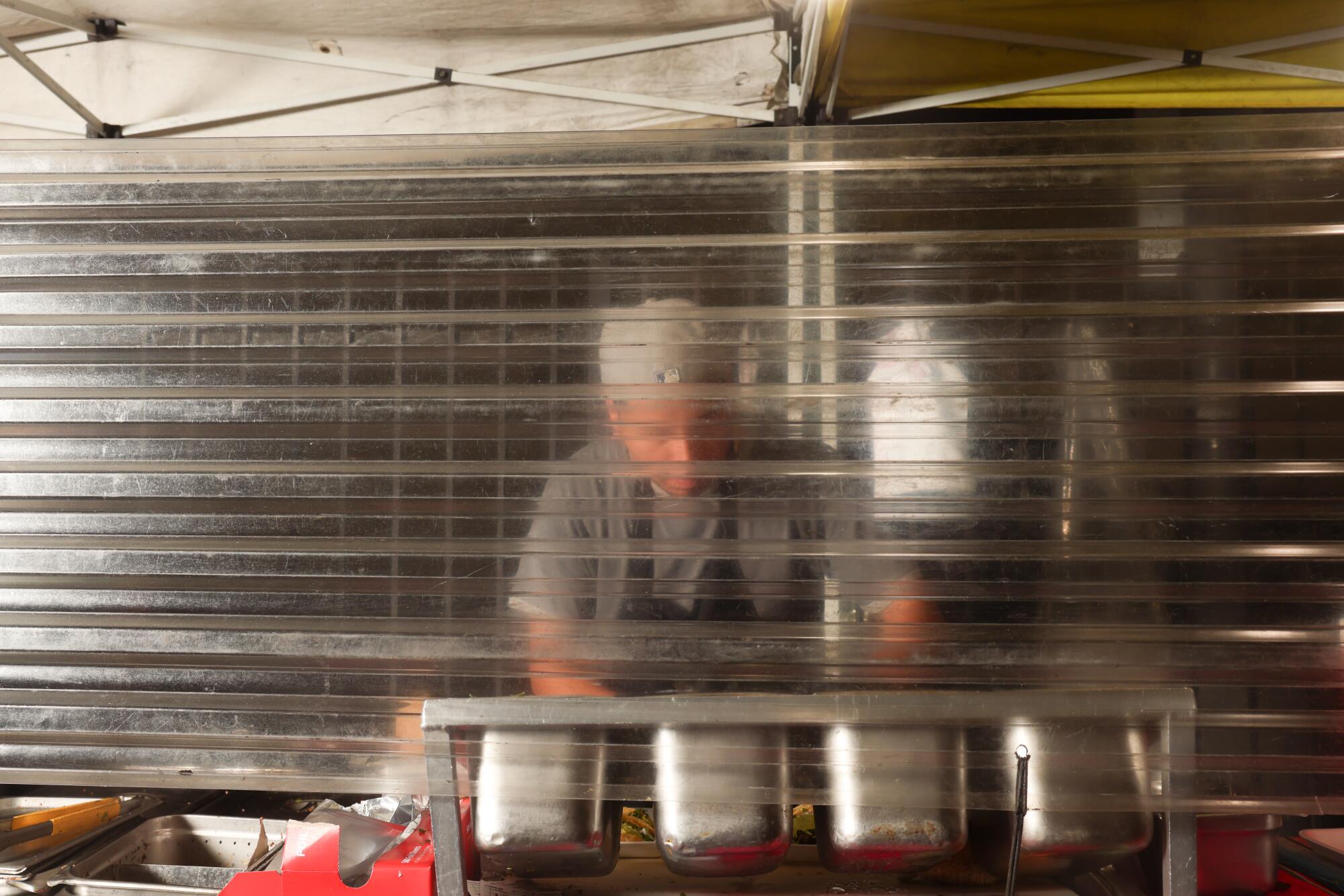
Robles started working as a taquero on the street when he was 18.
(Dania Maxwell / Los Angeles Times)
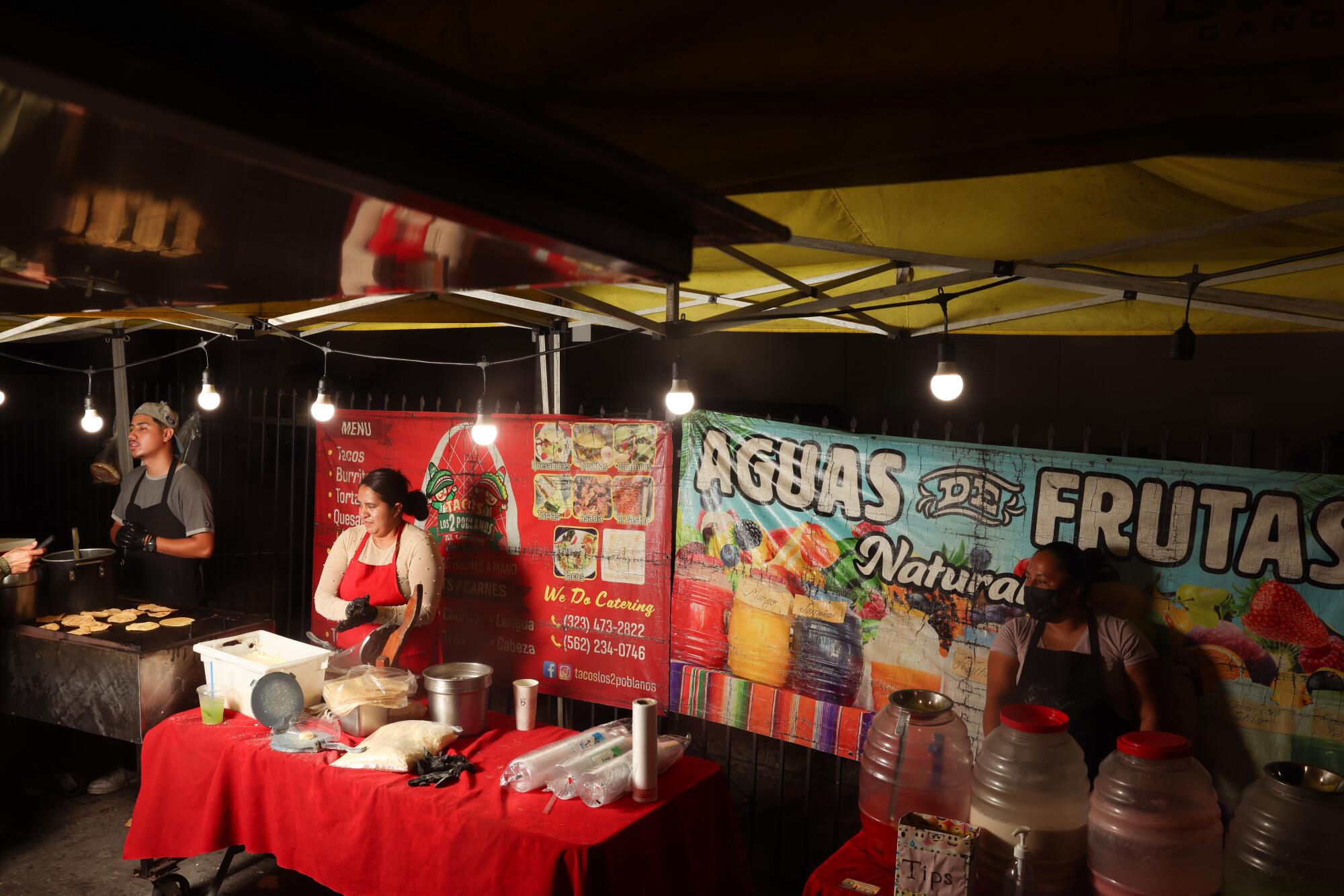
Tacos in L.A. are key to the whole strata of daily life, with all its sociocultural and historical layers, contradictions and idiosyncrasies, Hernandez writes.
(Dania Maxwell / Los Angeles Times)
It’s one of two jobs the Lynwood native now maintains plus his own taquero business. At Los 2 Poblanos, where he works some weekend nights, two ladies next to him hand-press tortillas, and at least one person handles cash and aguas frescas. There’s al pastor and asada. Smoke sizzles in the air as Robles goes, loading tortillas and slapping the formed tacos with a heavy dollop of pure guacamole — the signal that this is a Tijuana-style spot.
The taquero says he started out taking down orders, then moved onto chopping cilantro and onion. One day, the stand was extra busy. Robles says he picked up the knife and got to it.
“I make the tacos the way I would eat them, the way I would prepare them,” he says with a proud smile. “That’s how I do it for the people.”
And another L.A. taquero was born.


